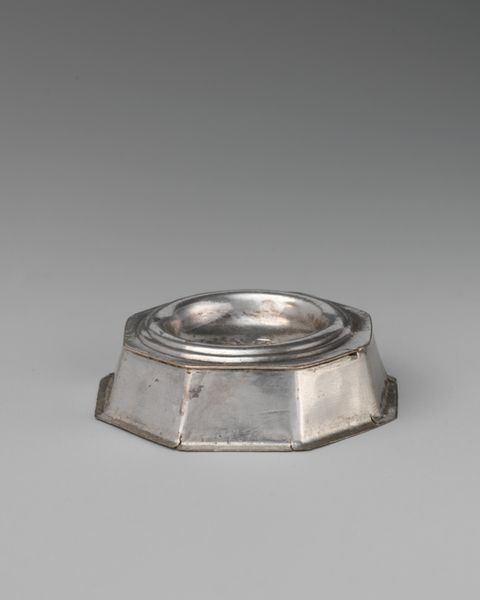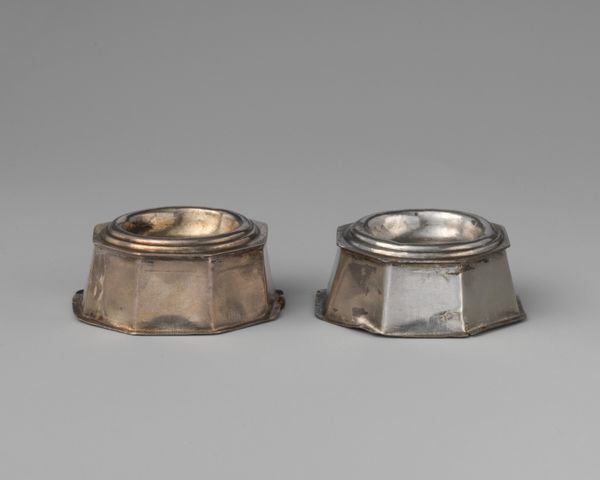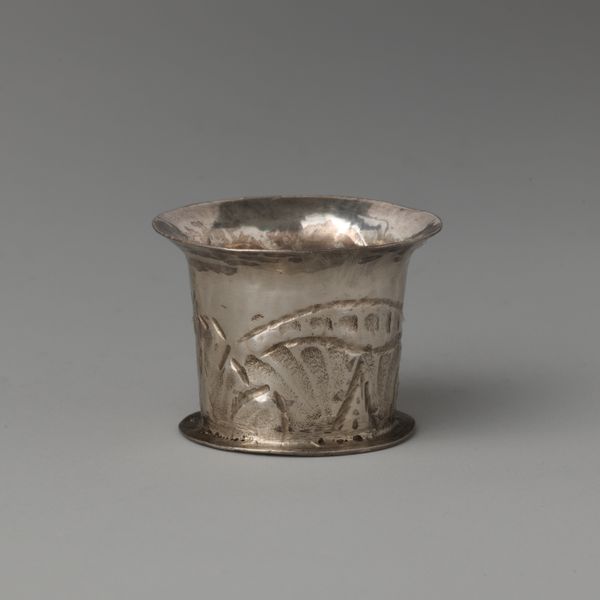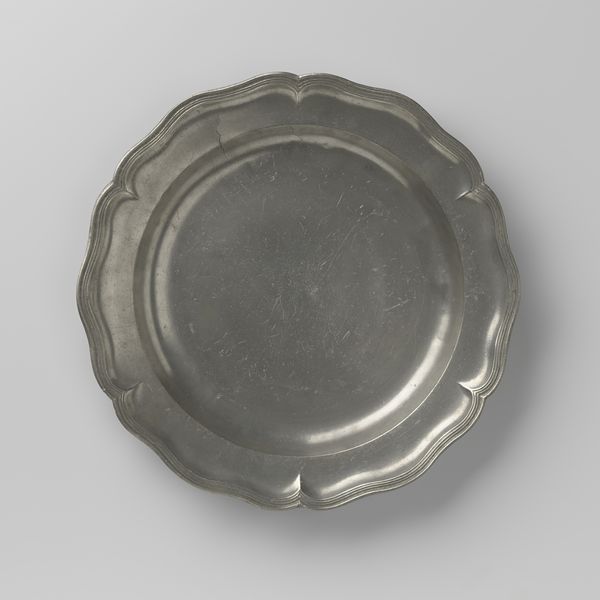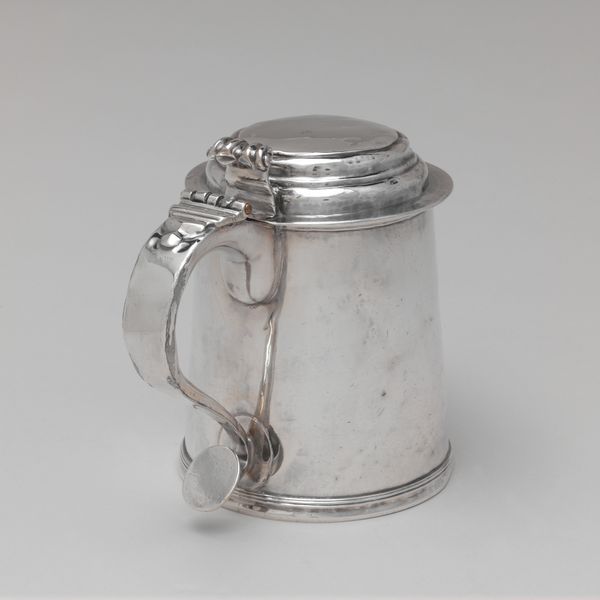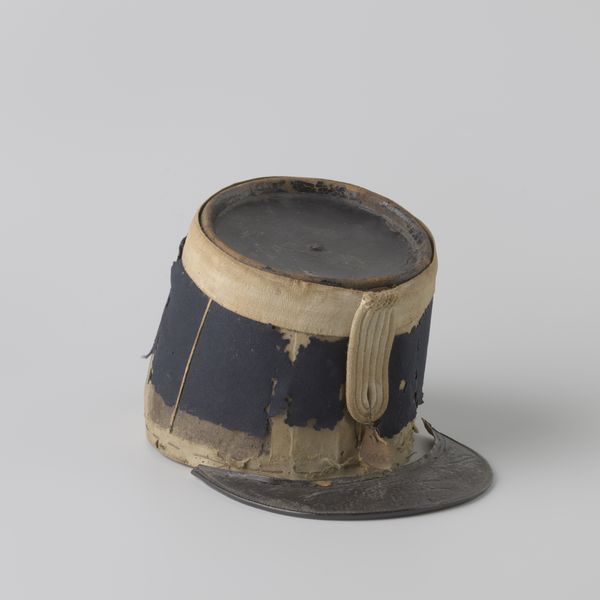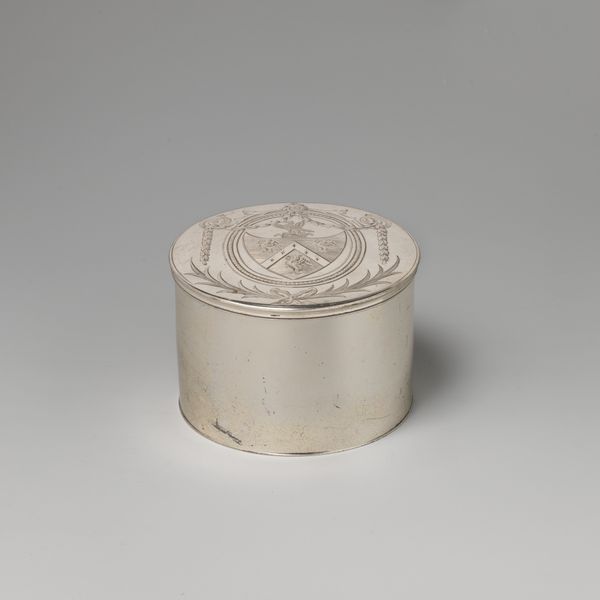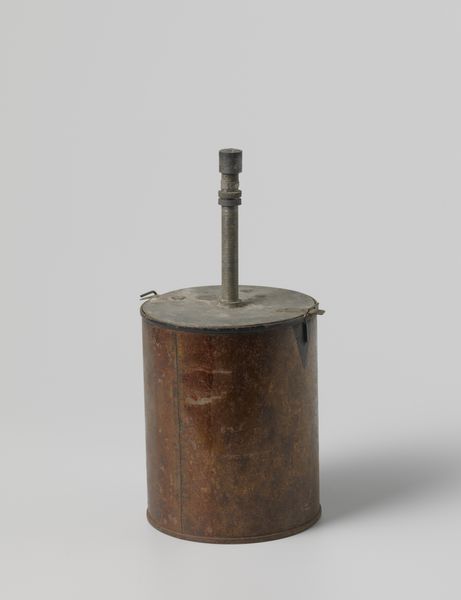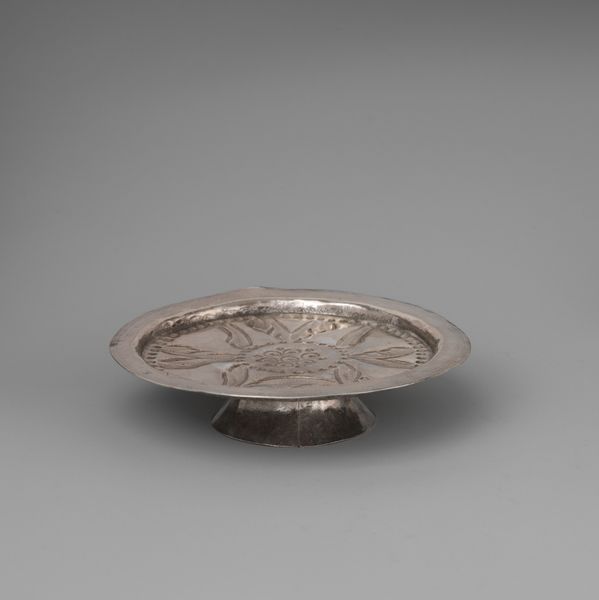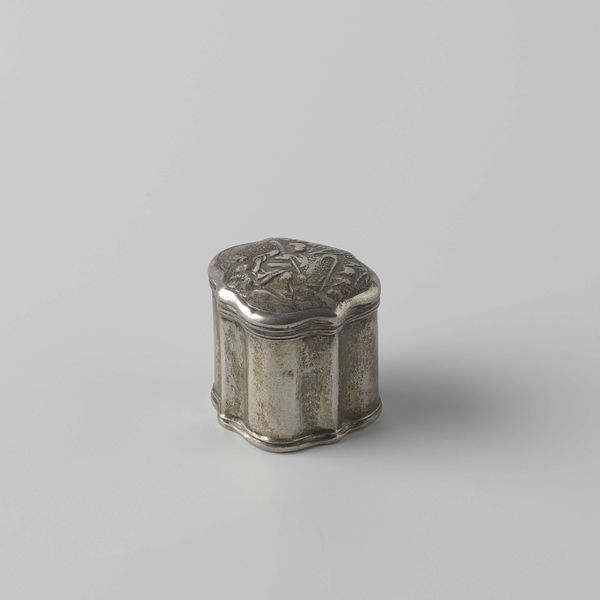
silver, metal, sculpture
#
silver
#
baroque
#
metal
#
sculpture
#
decorative-art
Dimensions: Overall: 1/2 × 1 1/2 in. (1.3 × 3.8 cm)
Copyright: Public Domain
Editor: So this is a miniature silver salt trencher, made in 1686 or 1687. I find the Baroque style interesting on something so small; it feels kind of precious, right? How would you interpret such a mundane item elevated in this way? Curator: The miniature scale speaks volumes. Salt, in the late 17th century, wasn't just a seasoning. Its preciousness gave it ritualistic value. To have a miniature trencher, a communal dish, suggests controlled distribution and the careful performance of social rituals around dining. Notice the material—silver. What does silver suggest to you in that era? Editor: Wealth, obviously, and status… but a miniature? Curator: Exactly. It amplifies the possessor's social capital. The symbolic weight rests not just on the material worth but the *performance* of that worth. Does this change how you see it now? Editor: Yes, definitely! So it’s less about pure utility and more about showing social status within a tight-knit circle, almost like a miniature stage for displaying privilege. I had been viewing this object entirely divorced from its context. Thank you for showing me the deeper meanings this object embodies! Curator: My pleasure! Now you understand the power a seemingly simple object holds when viewed through the lens of its cultural memory and intended symbolism.
Comments
No comments
Be the first to comment and join the conversation on the ultimate creative platform.
